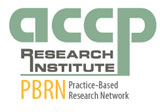
In pediatric clinical pharmacy practice, where limited data are available on the appropriate dosing, efficacy, and safety of drugs in children, practicing evidence-based medicine is a challenge. Most of us encounter issues in daily practice that could benefit from systematic scholarly inquiry. My own research career in neonatal pharmacology has benefited substantially from these events. Many of my research questions have arisen at the bedside. However, the impact of this research has been limited to the overall practice of neonatal pharmacology, primarily because of the lack of sufficiently powered studies.
Gaining power in a pediatric research study is a daunting challenge for many reasons, including finding a sufficient sample size at a single center, obtaining informed consent in a vulnerable population, and performing the blood sampling needed for studies that include pharmacokinetic data and biologic outcomes requiring blood marker measurements. As a solution to the problem of powering pediatric studies, research networks have been suggested, some of which exist for pediatric research. Most such networks are supported by the National Institutes of Health or individual health care organizations, whereas others exist as consortia. However, medication study is often not the primary focus of these networks. Nor are the contributions of the pediatric pharmacy clinicians sought to enrich medication-related research. In this circumstance, the Practice-Based Research Network of the American College of Clinical Pharmacy (ACCP PBRN) provides an excellent venue for pediatric pharmacy clinicians to come together for meaningful, well-powered research studies that will affect practice. The PBRN can produce research findings that are immediately relevant to clinicians and that, at least in theory, can easily translate to practice. Some suggestions for how the pediatric pharmacy community can use PBRN resources to achieve these findings are listed below.
The PBRN provides a venue for performing feasibility assessments of potential research ideas. The studies may be retrospective or prospective. Pediatric pharmacology research can benefit from pooling existing data at single institutions or developing research protocols for prospective studies at multiple institutions. The PBRN provides opportunities for multi-institutional patient enrollment using its infrastructure, which includes research resources (e.g., a central IRB and REDCap [a secure, online data collection tool]) and PBRNConnect (an online resource for individual member portfolio management and study-specific documentation).
I encourage pediatric clinical pharmacy practitioners to come together to develop well-powered pediatric drug–related studies that will significantly affect the care of pediatric patients using the ACCP PBRN, the first national clinical pharmacy–based research network.